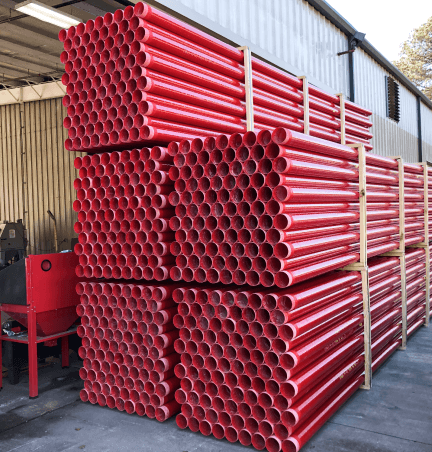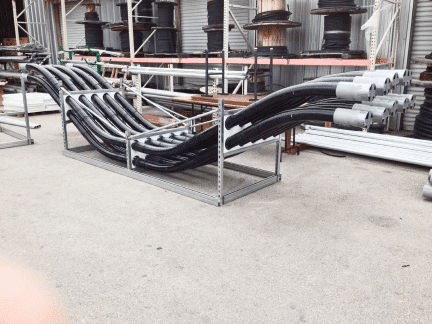How Contractors Can Work Safely and Efficiently When Field Cutting Champion FIberglass Conduit
Whatever your application needs, Champion Fiberglass provides a strong, corrosion-resistant conduit that has been used successfully in industries like transportation for bridges and tunnels, data centers, utilities, wastewater treatment, chemical plants, and mining.
Before conduit is selected and purchased, consideration must be given to the type of installation necessary for the project — above ground, below ground, buried, or concrete encased. Fast, easy installation is part of what makes Champion Fiberglass conduit (RTRC conduit) an exceptional product compared to other conduit types such as PVC-coated rigid steel & GRC conduits. The NECA Manual of Labor Rates documents that it is installed faster than most other conduit types.
In addition to being lightweight and durable, field cutting for proper fit of adhesive joints is a necessary step of installation. Rest assured that Champion Fiberglass conduit can be easily cut on the job site with a few simple procedures. All you need is the conduit, a few common hand power tools, and the right PPE (personal protective equipment).
PPE Safety Requirements
It is always important to follow safety protocol at installation, and that includes the most appropriate personal protective equipment, as dictated in our electrical conduit PPE guidelines detailed below. To prevent accidents, ensure that you have the following PPE on hand to protect skin, hands, eyes, and lungs:
- Long-sleeved clothing, such as a long-sleeve shirt
- Gloves
- Safety glasses
- Particulate mask (N95)
Tools To Facilitate Cutting
Field cuts can be made with the following tools:
- Fine-tooth hand-held hacksaw
- Portaband saw
- Chop saw with diamond cutting blade
- Abrasive blade cutter
Easy Step-by-Step for Fiberglass Conduit Field Cutting
Follow these steps for successful field cutting:
- Gather and put on the safety personal protection equipment (PPE).
- Measure and mark the fiberglass conduit with a contrasting colored marker (cut line).
- Cut with your choice of fiberglass cutting tools (hand-held hacksaw, portable band saw, chop saw or abrasive blade cutter)
- Finally, remove any cutting burrs or ridges with a 60-grit emery cloth before bonding.
For a complete installation guide, visit https://championfiberglass.com/fiberglass-installation/ which includes installation videos, FAQs, and best practices for cutting, bending, and bonding fiberglass conduit.
Recent Blogs
8 Types of Electrical Conduit and Their Uses
What is Electrical Conduit? Electrical conduit is a raceway used to house and protect electrical wires within a building or…
Rep Spotlight: Coleman-Russell & Associates Successfully Targets the Southeastern U.S.
Mechanical agency partner distributes Champion Strut™ with exceptional customer service. Since 1976, Coleman-Russell & Associates has been a premier mechanical…
Meet HR Department Manager: Dina Alvarado
Get to know Dina Alvarado, Champion FiberglassⓇ HR Department Manager. Learn about her background and vision for human resources.











